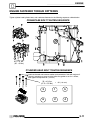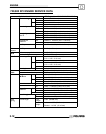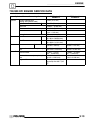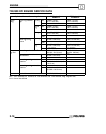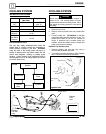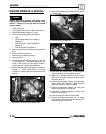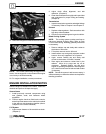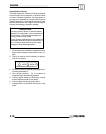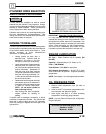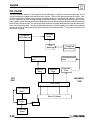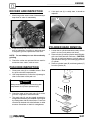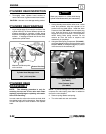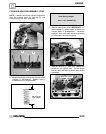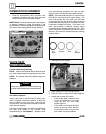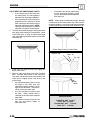
ENGINE
3.19
CYLINDER HONE SELECTION
AND HONING
PROCEDURE
CAUTION:
A hone which will straighten as well as remove
material from the cylinder is very important. Using a
common spring loaded glaze breaker for honing is not
advised for nicasil cylinders. Polaris recommends
using a rigid hone or arbor honing machine.
Cylinders may be wet or dry honed depending upon
the hone manufacturer’s recommendations. Wet
honing removes more material faster and leaves a
more distinct pattern in the bore.
HONING TO DEGLAZE
A finished cylinder should have a cross-hatch pattern
to ensure piston ringseating and to aidin the retention
of the fuel/oil mixture during initial break in. Hone
cylinder according to hone manufacturer’s
instructions, or these guidelines:
S Honing should be done with a
diamond hone. Cylinder could be
damaged if the hone is not hard
enough to scratch the nicasil lining.
S Use a motor speed of approximately
300-500 RPM, run the hone in and
out of the cylinder rapidly until cutting
tension decreases. Remember to
keep the hone drive shaft centered
(or cylinder centered on arbor) andto
bring the stones approximately 1/2″
(1.3 cm) above and below the bore at
the end of each stroke.
S Release the hone at regular intervals
and inspect the bore to determine if
it has been sufficiently deglazed, and
to check for correct cross--hatch.
NOTE: Do not allow cylinder to
heat up during honing.
S After honing has been completed,
inspect cylinder for thinning or
peeling.
If cylinder wear or damage is excessive, it will be
necessary to replace the cylinder. The cylinders are
lined with a nicasil coating and are not repairable.
Hone only enough to deglaze the outer layer of the
cylinder bore.
EXAMPLE OF CROSS HATCH PATTERN
IMPORTANT: Clean the Cylinder After
Honing
It is very important that the cylinder be thoroughly
cleaned after honing to remove all grit material. Wash
the cylinder ina solvent, then in hot, soapy water. Use
electrical contact cleaner if necessary to clean these
areas. Rinse thoroughly, dry with compressed air,
and oil the bore immediately with Polaris 4 Cycle
Lubricant to prevent the formation of surface rust.
ENGINE LUBRICATION
Oil Type -- Polaris Premium 0W--40 Synthetic (PN
2871281)
Capacity -- Approximately 2 U.S. Quarts (1.9 l)
Filter -- (PN 2540086)
Filter Wrench -- PV--43527 or equivalent
Oil Pressure Specification -- 35--39 PSI @ 5500
RPM, Polaris 0W--40 Synthetic , Engine at operating
temperature.
NOTE: SeeChapter 1 for oil change kit part numbers.
OIL PRESSURE TEST
1. Remove blind plug/sender from left side of
crankcase.
2. Insert a 1/8 NPT oil pressure gauge adaptor into
the crankcase and attach the gauge.
3. Start engine and allow it to reach operating
temperature, monitoring gauge indicator.
NOTE: Use only Polaris Premium 0W--40 Synthetic
Engine Lubricant.
Oil Pressure at 5500 RPM (Engine Hot):
Standard: 39 PSI
Minimum: 35 PSI



